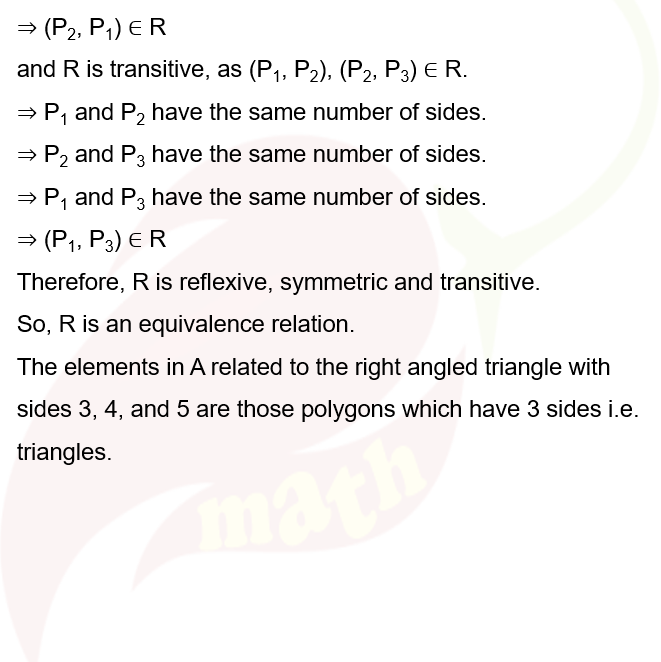Class 12
Relations and Functions
Exercise 1.1
1. Determine whether each of the following relations are reflexive, symmetric and transitive:
(i) Relation R in the set A={1,2,3,…,13,14} defined as R={(x,y) : 3x–y=0}
(ii) Relation R in the set N of natural numbers defined as R={(x,y) : y=x+5 and x<4}
(iii) Relation R in the set A={1,2,3,4,5,6} as R={(x,y) : y is divisible by x}
(iv) Relation R in the set Z of all integers defined as R={(x,y) : x–y is an integer}
(v) Relation R in the set A of human beings in a town at a particular time given by:
(a) R={(x, y) : x and y work at the same place}
(b) R={(x, y) : x and y live in the same locality}
(c) R={(x, y) : x is exactly 7 cm taller than y}
(d) R={(x, y) : x is wife of y}
(e) R={(x, y) : x is father of y}
9. Show that each of the relation R in the set A={x\(\in\)Z : 0≤x≤12}, given by
(i) R={(a,b) : |a–b| is a multiple of 4}
is an equivalence relation. Find the set of all elements related to 1 in each case.
10. Give an example of a relation. Which is:
(i) Symmetric but neither reflexive nor transitive.
(ii) Transitive but neither reflexive nor symmetric.
(iii) Reflexive and symmetric but not transitive.
(iv) Reflexive and transitive but not symmetric.
(v) Symmetric and transitive but not reflexive.
(A) R is reflexive and symmetric but not transitive.
(B) R is reflexive and transitive but not symmetric.
(C) R is symmetric and transitive but not reflexive.
(D) R is an equivalence relation.
16. Let R be the relation in the set N given by R={(a,b) : a=b–2, b>6}. Choose the correct answer.


